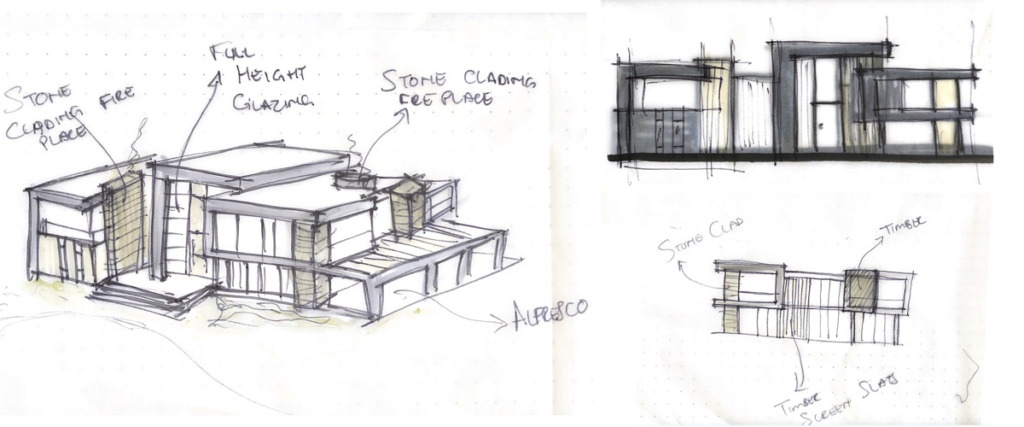Each submission gets timestamped with EST time and gets a unique identifier
assigned, example:
S10056


Early sketches, by the author, revealing how he initially imagined the project with a very contemporary scheme.
By Wandile Mthiyane
Wandile Mthiyane is an Obama Leader, TedxFellow, architectural designer, social entrepreneur and the founder and CEO of Ubuntu Design Group (UDG) and The Anti-Racist Hotdog. He is proud to introduce The Tea, a peer-to-peer inclusion rating platform.
“Hey bro, look at where I spent Christmas,” I bragged as I sent my friend a picture of my family home in the Eastern Cape. I intentionally withheld the fact that I was the designer of this home.
He swiftly responded, “Bro, that looks like the home my ancestors grew up picking cotton on.” My knee-jerk defensive reaction was to text, “Well, like the N-word, I have reclaimed this style for my Black family.” As I wrote those words, however, I wondered if I truly had reclaimed this style.
Can we remember, acknowledge and reclaim — or even indulge in — architecture that, to certain marginalized groups, represents oppression? Can we do so without sanitizing my family home to look acceptable to my critics of neoclassical architecture because of its symbolic association with slavery?
This is the question I’ve been asking myself since the day I was asked, at age 26, to design the house that would replace my mom’s childhood home, effectively becoming the central home for my maternal side. As I write this article as a 30-year-old man, four years later, my perception and perspective on this topic — regarding race, equity and reparations — have drastically evolved. I began thinking about the racial implications of the house’s style from the moment that my uncle requested it. The examples they sent me were of classical, colonial-looking architecture instead of a more traditional African aesthetic, which I would have preferred.


Each submission gets timestamped with EST time and gets a unique identifier
assigned, example:
S10056


Your ID: S12312312






This notification means your entry was sent successfully to the system for review and processing.
If you have any further questions or comments, reach out to us via the main contact form on the site
Have a great day!







New to NOMA?
Create your account
Already have an account?
Sign in

Not A NOMA Member? Click Here!
Create your account
